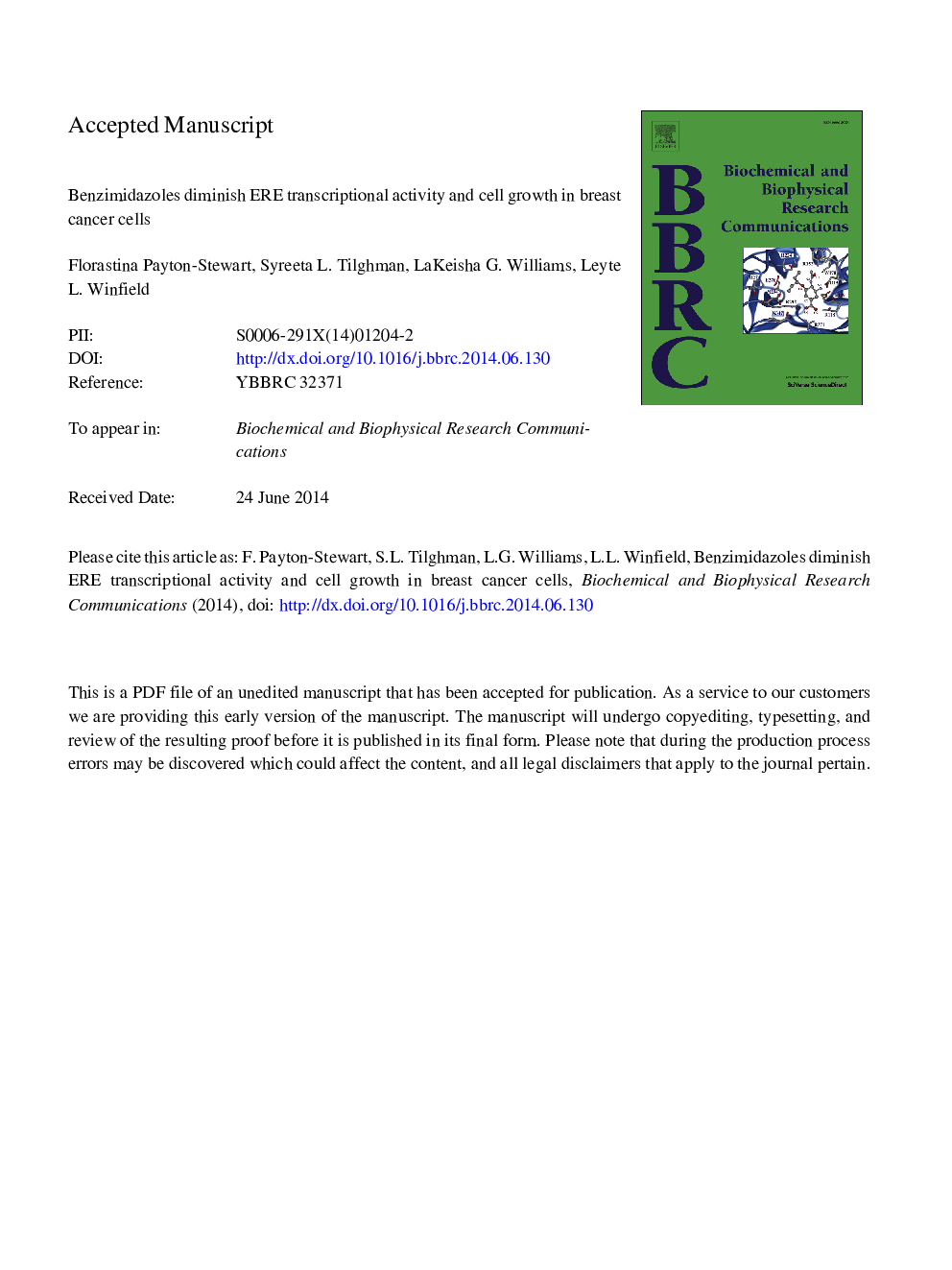| Article ID | Journal | Published Year | Pages | File Type |
|---|---|---|---|---|
| 8297268 | Biochemical and Biophysical Research Communications | 2014 | 21 Pages |
Abstract
Estrogen receptors (ERα and ERβ) are members of the nuclear receptor superfamily. They regulate the transcription of estrogen-responsive genes and mediate numerous estrogen related diseases (i.e., fertility, osteoporosis, cancer, etc.). As such, ERs are potentially useful targets for developing therapies and diagnostic tools for hormonally responsive human breast cancers. In this work, two benzimidazole-based sulfonamides originally designed to reduce proliferation in prostate cancer, have been evaluated for their ability to modulate growth in estrogen dependent and independent cell lines (MCF-7 and MDA-MB 231) using cell viability assays. The molecules reduced growth in MCF-7 cells, but differed in their impact on the growth of MDA-MB 231 cells. Although both molecules reduced estrogen response element (ERE) transcriptional activity in a dose dependent manner, the contrasting activity in the MDA-MB-231 cells seems to suggest that the molecules may act through alternate ER-mediated pathways. Further, the methyl analog showed modest selectivity for the ERβ receptor in an ER gene expression array panel, while the naphthyl analog did not significantly alter gene expression. The molecules were docked in the ligand binding domains of the ERα-antagonist and ERβ-agonist crystal structures to evaluate the potential of the molecules to interact with the receptors. The computational analysis complimented the results obtained in the assay of transcriptional activity and gene expression suggesting that the molecules upregulate ERβ activity while down regulating that of ERα.
Keywords
Related Topics
Life Sciences
Biochemistry, Genetics and Molecular Biology
Biochemistry
Authors
Florastina Payton-Stewart, Syreeta L. Tilghman, LaKeisha G. Williams, Leyte L. Winfield,
